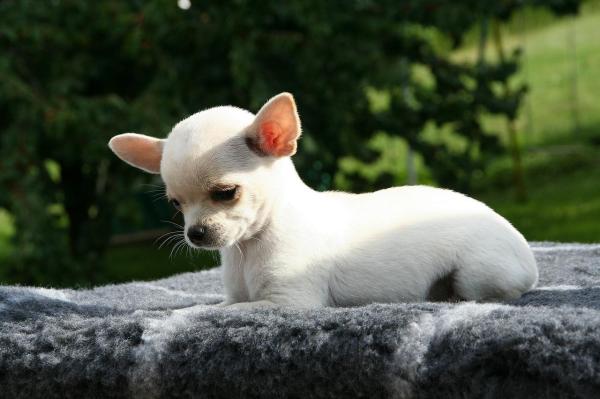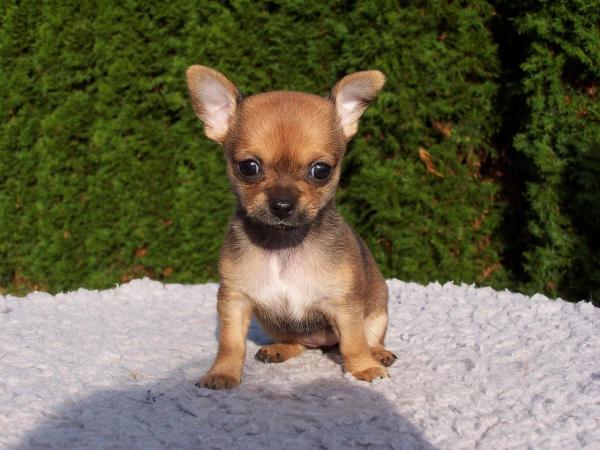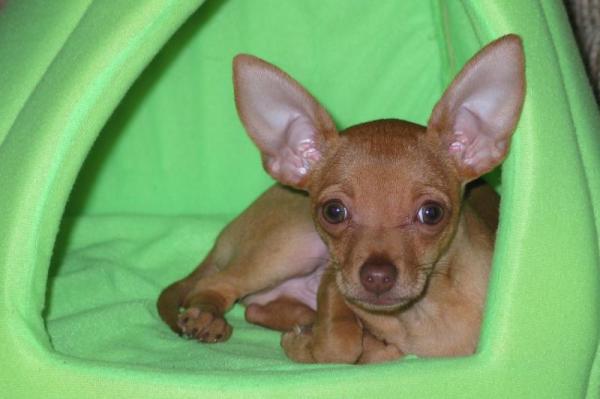
The Chihuahua is one of the oldest dog breeds in the Americas. Originating in Mexico, they are also well-known for being the world's smallest dog breed. Although many trace their name to the state of Chihuahua, there are some who refute this theory. The word ‘Chihuahua’ itself means an ‘arid and sandy place’ in the language of the Rarámuri people. The original name of the breed was the ‘chihuahueño’, the current name being a mistranslation.
Despite their ancient historical roots, the Chihuahua breed has remained relatively similar throughout the centuries. This leads to many asking about the different types of Chihuahua. We find out all breed variations of the Chihuahua in this AnimalWised article. We do so, in part, by looking at the breed standards issued by the International Cynological Federation (Fédération Cynologique Internationale or FCI).
How do I know what type of Chihuahua I have?
Unlike some, this dog breed is fairly easy to recognize. Their size and certain distinguishing features set them apart. This is despite the fact there are various different types of Chihuahuas, although not all are recognized by every canine organization. This is due to various reasons regarding the breed standard, but many have been subject to change over the years.
The anatomical differences of each type of Chihuahua are relatively simple to observe, making it easier for us to distinguish them. This means differentiating them yourself can be done without any outside help. All you have to do is compare the typical characteristics of each type, whether officially recognized or not, with those of your Chihuahua. By doing so, you can see if your Chihuahua matches.
The characteristics you need to take into account when identifying your type of Chihuahua are the following:
- Coat: the FCI accepts two different types of coat in this breed, long-haired and short-haired.
- Head: there are two distinct head shapes characteristic of this breed, the apple head and deer head. Only the apple head is accepted by the FCI.
- Size: there is a much smaller variety of Chihuahua called the teacup Chihuahua. However, these dogs are not officially recognized and their breeding is discouraged by any reputable organization. You can find out why this is below.
To know more about the different types of Chihuahua and their breed variations, we go into more detail in the following sections.
Common Chihuahua characteristics
Although each type of Chihuahua presents certain specific characteristics there are a number of general similarities common to all breed types. These characteristics must be present for them to be a Chihuahua. The Chihuahua is a small dog with a compact body, noticeably standing out for its head shape. For the Chihuahua to be considered a purebred dog, emphasis is placed on the apple head shape, the only type recognized by the FCI.
The Chihuahua must also have a short snout which is wider at the base and thinner at the tip. As for their eyes, they are also one of the most distinctive features of the breed. They are large, round and expressive. They should not be overly protruding, as can happen with some breeds such as Pugs. In general the Chihuahua's eyes are usually dark in color.
On the other end of the Chihuahua, their tail should be moderately long, arched high or in a semi-circle. It should always be pointing to its spine. In terms of size, the FCI indicates that the allowed weight should be between 1 and 3 kilograms. Finally, it should be noted that the breed can present in practically any color and coat pattern combination, with exception of merle markings. While some may exist, they are not considered breed standard.

Teacup Chihuahua
Currently, there are several types of Chihuahua dog which we can find all over the world. Not all of them are officially recognized by different breed standard organizations. They would not be considered purebred Chihuahuas. Pedigree Chihuahuas are purebred dogs of this breed which can trace their lineage.
Among the different varieties of Chihuahua, the most controversial is the teacup Chihuahua. While the Chihuahua is already very small, a teacup Chihuahua is even smaller, weighing below the 1 kg minimum of adult Chihuahuas. This occurs thanks to selective breeding, whereby smaller sized Chihuahuas are bred with each other to encourage very small sized dogs.
Teacup Chihuahuas are not accepted by the FCI and most kennel clubs. According to the FCI, there are no differences in Chihuahuas according to size. They are all considered to be in the ‘Companion and Toy Dogs’ category. Anything under the 1 kilo marker is unacceptable. Despite this, they have become very popular among owners worldwide.
The main problem with breeding such small dogs is the fact that doing so increases the risk of various diseases and health problems. Despite their cuteness, this practice is harmful to individual dogs and many spend their lives with a seriously affected well-being. To learn more, read out article on everything you need to know about teacup dogs.

Apple head Chihuahua
As we have stated above, the apple head Chihuahua is the only kind officially recognized by the FCI. According to the federation, the dog's head must be strictly apple shaped when looked at straight on. From a frontal view, the head looks apple-shaped, i.e. completely round with a bulging forehead. They can be both long-haired or short-haired, with all colors being accepted.

Deer head Chihuahua
This variation is somewhat controversial also, although not as much as teacup dogs. Despite the fact that deer head Chihuahuas have been recorded for many years, they are not accepted as a breed standard. For this reason, they are not even considered purebred.
The deer head Chihuahua, also sometimes known as the pear head Chihuahua, has a more elongated shape. In this case, the snout is usually longer and the eyes slightly smaller. It is perhaps the more popular type of the two head shapes in terms of companion animals. One slightly odd factor is that apple head Chihuahuas are more likely to suffer from respiratory disease thanks to their shorter snout.

Types of Chihuahua according to coat
Within the official breed standard, all organizations differentiate between two main types of Chihuahua. They differ according to their coat type. In this way, we can say the officially accepted type of Chihuahua are the:
Long-haired Chihuahua
The coat of this Chihuahua type is long, thin, silky or slightly wavy. It is, however, never curly. They may or may not have an undercoat, something which can change the softness of its feel. Different parts of the long-haired Chihuahua may be longer than others. For example, the ears, neck, tail and back of the thighs might have longer hair. It should be noted that if the hair is too long and fluffy, like that of the Pomeranian, it will not be accepted by FCI governing bodies.
Smooth-hair Chihuahua
It is possible for the smooth-hair Chihuahua to also have an undercoat, although not all do. Although slightly longer in the neck and tail areas, the smooth-hair Chihuahua has a short coat. The presence of an undercoat will affect how much it sheds.

Considerations when adopting a Chihuahua
When adopting a Chihuahua puppy or adult dog, we should to be aware of their origin. This means if we are buying from a breeder, they need to be a respectable professional and not running a puppy mill. However, in many cases, it may not be possible to tell their history. This is because we may adopt them from a shelter or kennel due to abandonment. Regardless, it is vital you take the Chihuahua to a veterinarian to give them a general health checkup.
On the other hand, it is important to know that some types of Chihuahua will lose a lot of hair. Generally, these are the ones with an undercoat. Length is not necessarily a deciding factor. Smooth-hair Chihuahuas with an undercoat will shed more than long-hair Chihuahuas without. They will likely need two brushes per week, with more grooming sessions during shedding season.
Chihuahuas can be very loving dogs, regardless of their type. However, they can also be very active and stubborn. This means that educating a Chihuahua can be difficult. You will need many sessions with reviewing sessions to internalize what has been learned previously. Always use positive reinforcement. If you have decided to adopt a Chihuahua, you can take a look at our article on what to feed a Chihuahua.

If you want to read similar articles to Types of Chihuahua - All Breed Variations, we recommend you visit our Comparisons category.
1. Fédération Cynologique Internationale. (2019). Chihuahueño (Chihuahua). Retrieved on February 3rd, 2020, from http://www.fci.be/Nomenclature/Standards/218g09-es.pdf